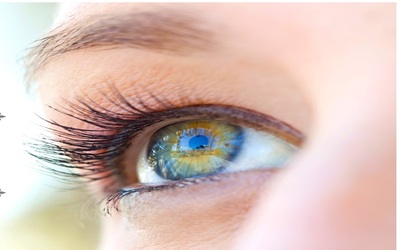The retina is located at the back of the eye, which senses light. The Diabetic Retinopathy is the complication which damages the retina.
[the_ad id=”13371″]
Mostly it develops in patients suffering from diabetes type I or II. The patients suffering from diabetes for a very long time and that too not under control, develop Diabetic Retinopathy very easily. So it is very important to monitor & control the blood glucose and blood pressure regularly in order to prevent your eyes from retinopathy.
At first there may be no symptoms of retinopathy. It can start up with mild vision problem or even blindness occurs suddenly. Diabetic retinopathy can get better with time without any treatment or even permanently damage the vision by causing blindness.
Causes of Diabetic Retinopathy
The basic cause of Diabetic retinopathy is due to the abnormalities in the blood vessel located in the retina.
Types of Diabetic Retinopathy
There are two main types of diabetic retinopathy, which can lead to permanent loss of vision.
-
Non-Proliferative diabetic retinopathy (NPDR);
In NDPR, the blood vessels stops growing and starts weakening up with sometimes leaking or oozing fluid and blood into the retina. It can be mild or severe. With NPDR progresses, small vessels may close with large vessels becoming irregular in diameter resulting in loss of vision.
-
Proliferative diabetic retinopathy (PDR);
It is the most severe type of diabetic retinopathy in which the new blood vessels start growing abnormally, which mostly leads to leaking into the center of the eye (vitreous). Gradually, the scar tissues will stimulate and cause the retina to detach from the back of the eye. If the blood vessels interfere with the flow of fluid and blood, then it will cause glaucoma by building up pressure in the eyeball resulting in damaging the nerve which carries images from the eye to the optic nerve.
Symptoms
Generally, symptoms appear only at the last stage of diabetic retinopathy, which are;
- Black spots
- Blurred vision
- Sudden loss of vision in one or both eyes
- Dark or empty areas in vision
- Color perception difficulty
- Difficulty reading or viewing detailed work
In facing any of these symptoms, contact the ophthalmologist in order to prevent new blood vessels, blocking the nerves and causing complete vision loss.
Diagnostic tests available to diagnose diabetic retinopathy
The best diagnostic test available for diabetic retinopathy is a dilated eye examination, which let the ophthalmologist to check the presence of cataracts, abnormal vessels, swelling, scar tissues, bleeding, detachment and optic nerve abnormalities.
In addition to the eye examination, there are few procedures which may be performed such as;
-
Fluorescein Angiography;
It is the retinal photography which is used to view the inside of the eye for any leaking or abnormal vessels.
-
Optical Coherence Tomography;
It is used to get the cross-sectional image of the retina, to check the thickness of the retina and fluid leakage into the retinal tissue. OCP is very effective to determine how and what kind of treatment is required.
-
Early diabetic retinopathy (non-proliferative diabetic retinopathy);
The stage basically needs immediate treatment in which in addition to the ophthalmologist, an endocrinologist will get involved in the treatment to plan the diabetes management. This stage can easily be slow down with proper monitoring and controlling diabetic level. Though sometimes surgery is recommended for severe cases.
-
Advanced diabetic retinopathy (proliferative diabetic retinopathy);
This stage requires immediate surgical treatment options which depend upon the severance of the specific problem;
Focal laser treatment (photocoagulation);
This procedure can stop or slow down the leakage of blood and fluid from the eye.
Scatter laser treatment (panretinal photocoagulation);
This procedure can shrink the abnormal blood vessel by treating the area of the retina away from the macula with scatter laser. Some loss of peripheral vision or night vision is possible after the procedure.
Vitrectomy;
This procedure removes the scar tissue and vitreous in the retina. Mostly it is accompanied by a laser treatment.
Generally, surgery slow down or even stops the progression of diabetic retinopathy but there is always a potential to damage the retina and leads to vision loss. So it’s important that even after the surgery, one should maintain eye examination as well as the diabetic level.
Reducing The Risk Of Diabetic Retinopathy
- Monitoring and maintaining the blood glucose and pressure levels
- Commitment towards managing diabetes by eating healthy food and follow the lifestyle as per recommended by your doctor.
- Quit smoking
- Consult the ophthalmologist for any sudden vision problem.
- Monitoring glycosylated hemoglobin test (hemoglobin A1C) twice a year or as recommended by the expert. The Hemoglobin A1C should be below 7 percent.
Source:

